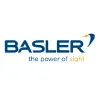The Global Laboratory Filtration Market is witnessing steady growth due to several factors. The increasing demand for high-quality research and diagnostic outcomes, stringent regulatory requirements in the pharmaceutical and biotechnology sectors, and the rising emphasis on contamination-free laboratory processes are driving market expansion. The global laboratory filtration market also assesses the competitive landscape, product portfolios, and strategies of major market players. Additionally, the analysis delves into regional dynamics, emerging technologies, and future growth opportunities in the laboratory filtration market.
According to Data Bridge Market Research, the global laboratory filtration market is expected to undergo a CAGR of 8.70% during the forecast period of 2022 to 2029. This indicates that the market value, which was USD 3.60 billion in 2021, and anticipated to reach USD 7.01 billion by 2029.
“Rising technological advancements facilitate market growth”
Rising technological advancements serve as a significant driver in the laboratory filtration market. Advancements in filtration technologies have led to the development of innovative and efficient filtration products. These advancements include the introduction of advanced filter media, improved membrane materials, and enhanced filtration systems. The integration of automation, robotics, and IoT technologies in laboratory filtration systems has improved the accuracy, efficiency, and reproducibility of filtration processes. Furthermore, the application of nanotechnology and molecular biology techniques has expanded the capabilities of laboratory filtration, enabling precise separations and high-throughput operations. Technological advancements continue to drive market growth by offering improved performance, reliability, and ease of use in laboratory filtration applications.
What restraints the growth of the global laboratory filtration market?
“High cost associated with research and development”
The high cost associated with research and development (R&D) proficiencies acts as a significant restraint in the global laboratory filtration market. R&D activities require substantial investments in equipment, facilities, skilled personnel, and consumables. The extensive R&D processes involved in developing innovative filtration technologies and products contribute to increased costs, which ultimately affect the pricing of laboratory filtration products. Additionally, the complexity of R&D activities, including regulatory compliance and lengthy approval processes, adds to the overall cost. These factors pose challenges for market players, particularly smaller companies, limiting their ability to invest in R&D and thereby restraining market growth.
Segmentation: Global Laboratory Filtration Market
The laboratory filtration market is segmented on the basis of product type, technology, and end user.
- On the basis of product type, the laboratory filtration market is segmented into filtration media, filtration assemblies, filtration accessories, and others.
- On the basis of technology, the laboratory filtration market is segmented into microfiltration, ultrafiltration, vacuum filtration, Nano filtration, and reverse osmosis.
- On the basis of end user, the laboratory filtration market is segmented into pharmaceutical and biotechnology companies, hospital and diagnostic laboratories, food and beverage companies, academic institutes, academic and research institutes, and others.
Regional Insights: North America dominates the Global Laboratory Filtration Market
North America dominates the laboratory filtration market due to its robust healthcare infrastructure, increasing investments by key players in advanced devices, and a high number of drug development processes. The stringent regulatory landscape in the pharmaceutical industry and a surge in research activities further contribute to its dominance.
Asia-Pacific is expected to experience substantial growth during the forecast period. Government initiatives promoting healthcare awareness, the rise of medical tourism, growing research activities, and increasing demand for quality healthcare drive the market's growth in the region. The expanding healthcare sector and favorable initiatives create favorable conditions for the adoption of laboratory filtration technologies in Asia-Pacific.
To know more about the study visit, https://www.databridgemarketresearch.com/reports/global-laboratory-filtration-market
Recent Developments in Global Laboratory Filtration Market
- In September 2020, Merck Millipore made a generous donation of research instruments and materials worth IDR 1.2 billion (USD 0.086 million) to the Eijkman Institute for Molecular Biology in Indonesia. This contribution aimed to accelerate the vaccine development process, showcasing the company's commitment to supporting scientific advancements and addressing the urgent need for vaccines during the challenging times of the COVID-19 pandemic.
The Prominent Key Players Operating in the Global Laboratory Filtration Market Include:
- ALFA LAVAL (Sweden)
- Merck Millipore (U.S.)
- Danaher. (U.S.)
- Sartorius AG (Germany)
- 3M (U.S.)
- GEA Group Aktiengesellschaft (Germany)
- STERIS plc (U.S.)
- Thermo Fisher Scientific Inc. (U.S.)
- Veolia Water Technologies (France)
- Avantor, Inc (US), GVS S.p.A (Italy)
- MANN+HUMMEL (Germany)
- Agilent Technologies, Inc (U.S.)
- Ahlstrom-Munksjö (Finland)
- MACHEREY-NAGEL GmbH & Co. KG (Germany)
- AMD Manufacturing, Inc. (Canada)
- Koch Separation Solutions (U.S.)
- Cole-Parmer (U.S.)
- AQUAPORIN A/S (Denmark)
Above are the key players covered in the report, to know about more and exhaustive list of global laboratory filtration market companies contact, https://www.databridgemarketresearch.com/contact
Research Methodology: Global Laboratory Filtration Market
Data collection and base year analysis are done using data collection modules with large sample sizes. The market data is analyzed and estimated using market statistical and coherent models. In addition, market share analysis and key trend analysis are the major success factors in the market report. The key research methodology used by DBMR research team is data triangulation which involves data mining, analysis of the impact of data variables on the market, and primary (industry expert) validation. Apart from this, data models include Vendor Positioning Grid, Market Time Line Analysis, Market Overview and Guide, Company Positioning Grid, Company Market Share Analysis, Standards of Measurement, global vs Regional and Vendor Share Analysis. Please request analyst call in case of further inquiry.










